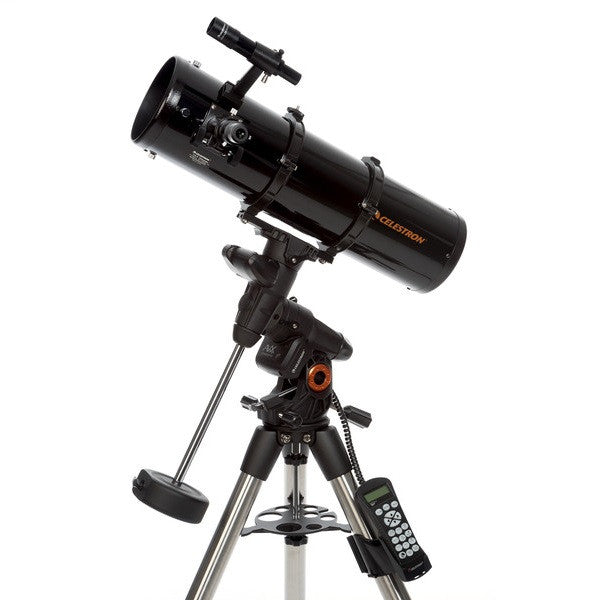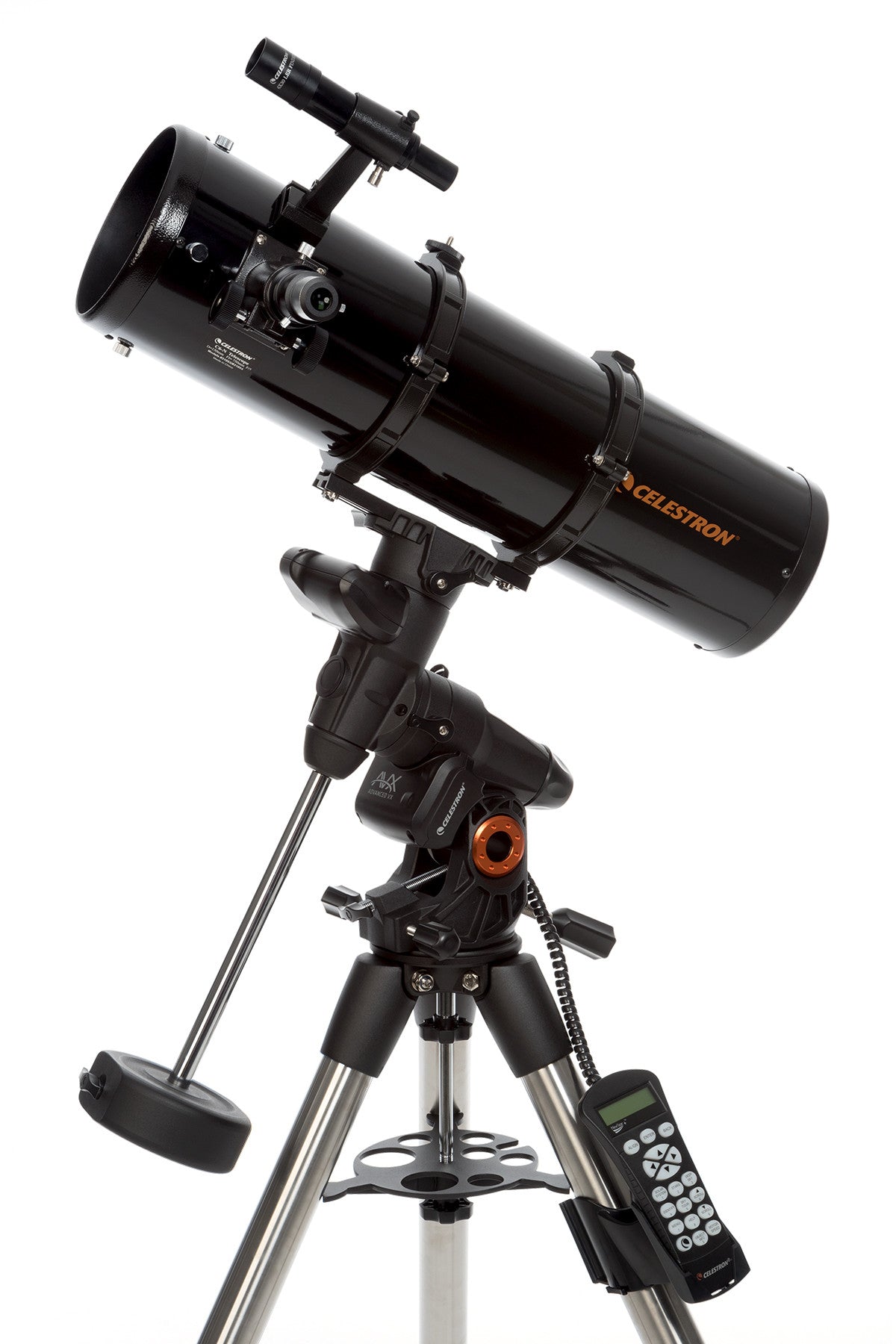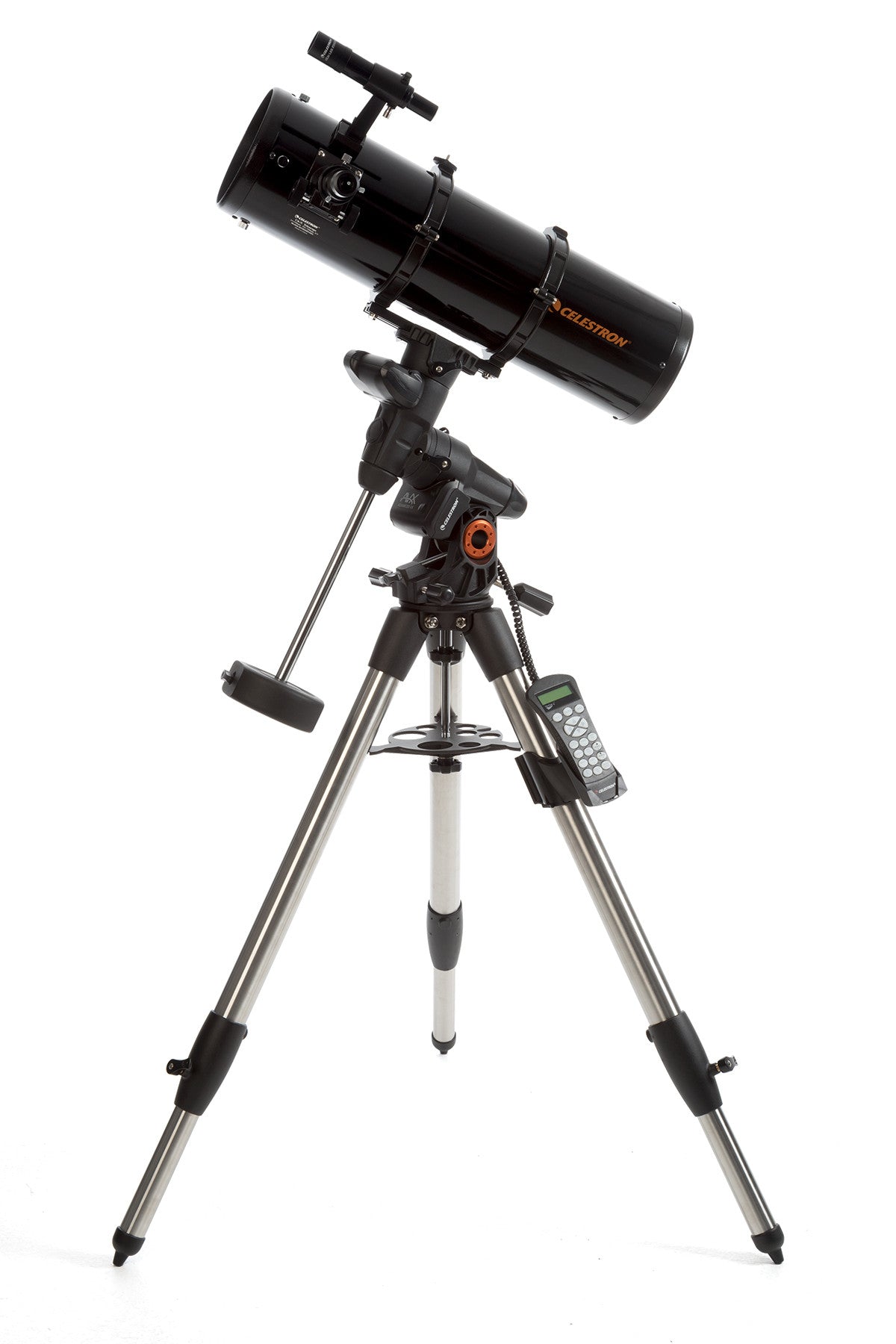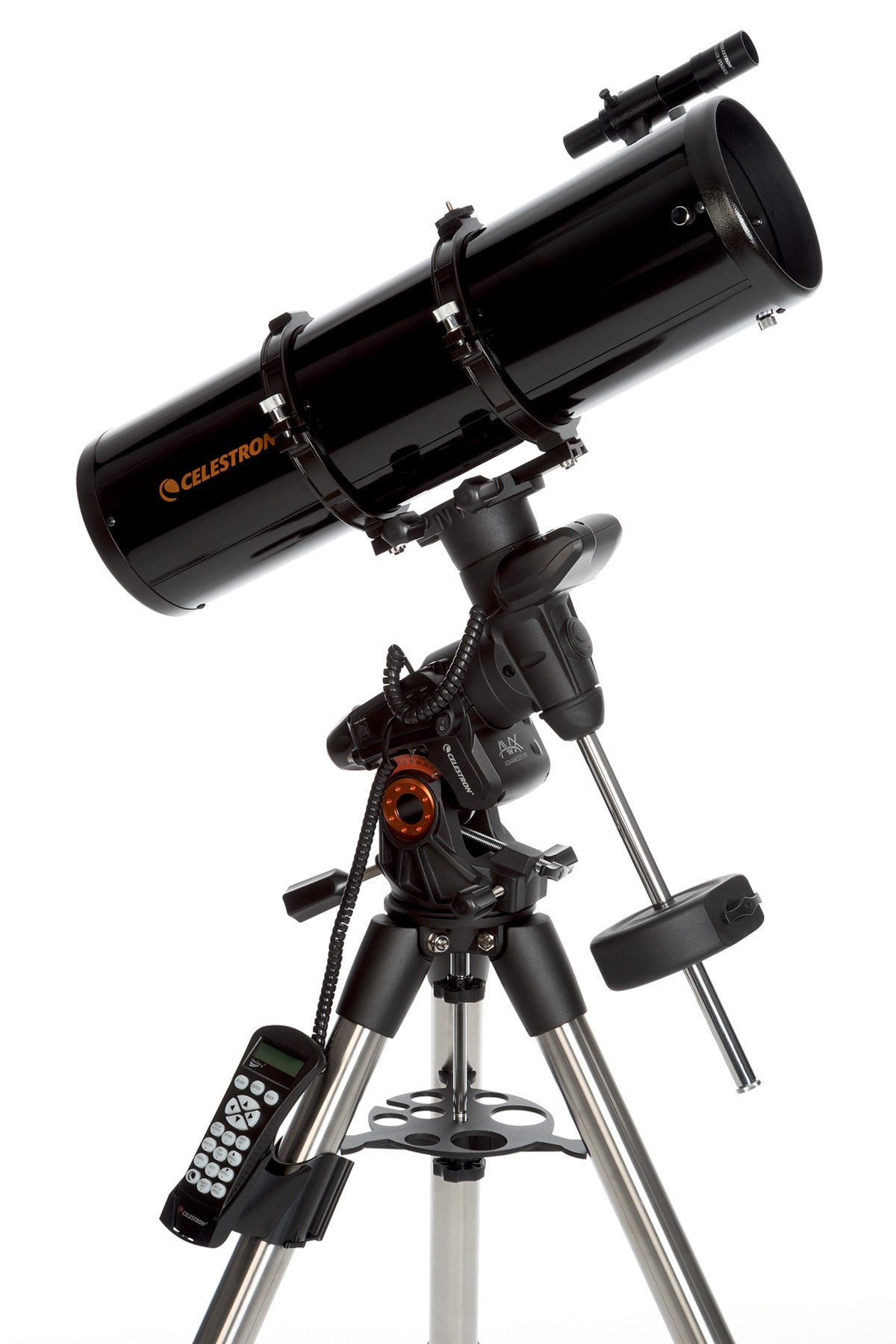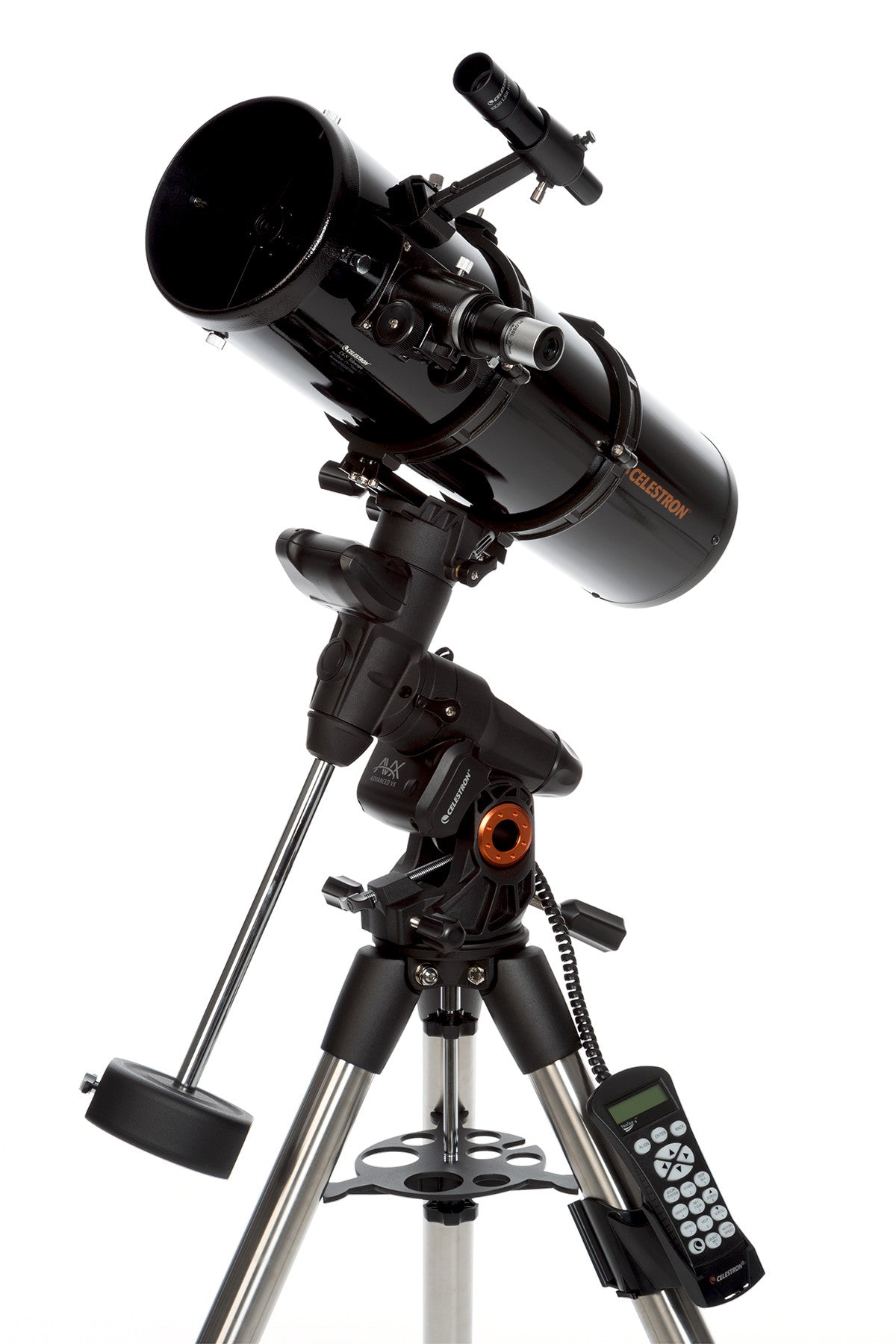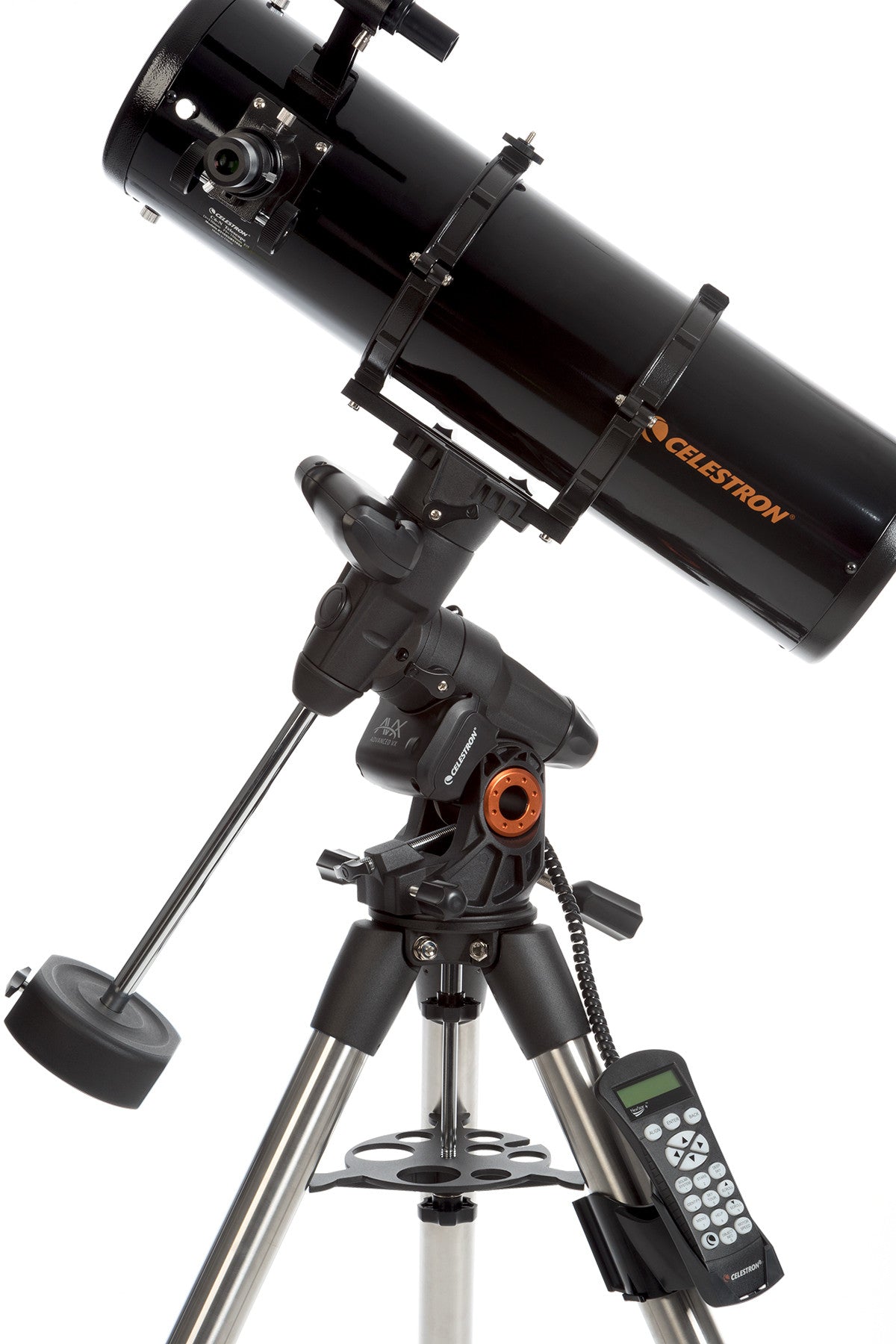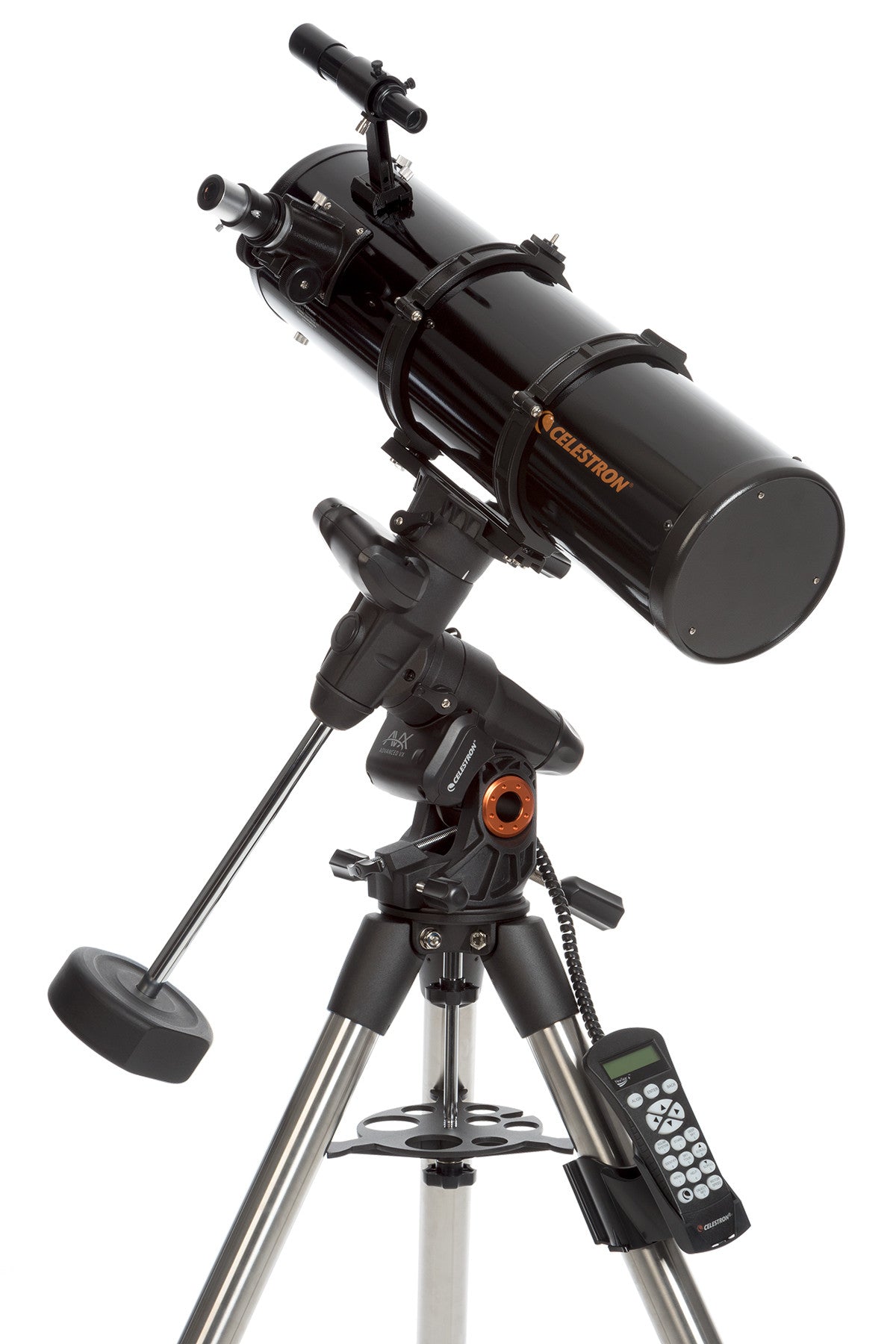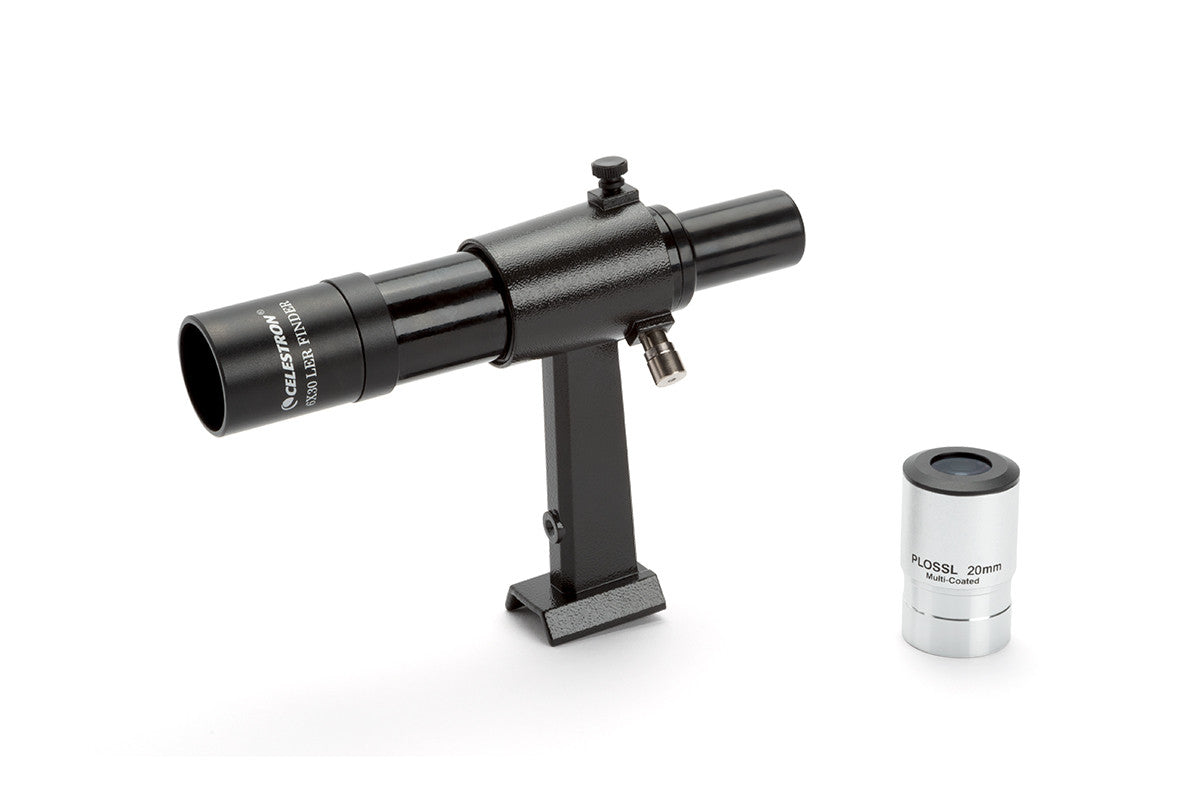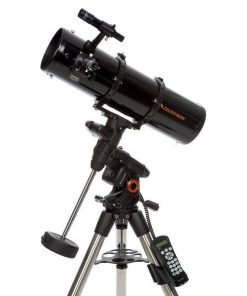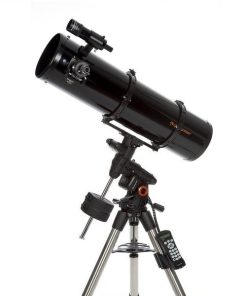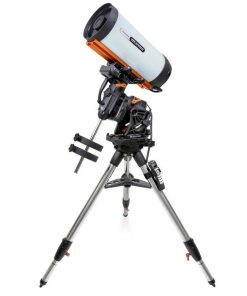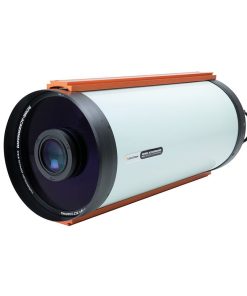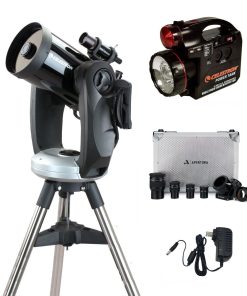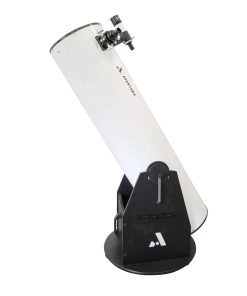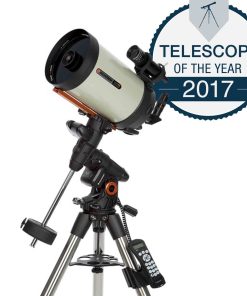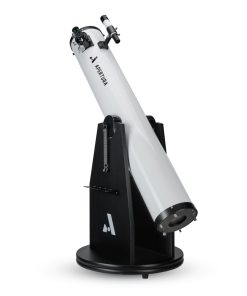Celestron Advanced VX 6 Inch Newtonian Telescope – 32054 Celestron
$ 1.099,00 $ 274,75
For those new to astronomy and astroimaging, the Celestron Advanced VX 6” Newtonian Telescope is an excellent entry-level setup that can grow with you. The Newtonian optical design is excellent for visual observing and offers you the largest aperture for the price. Combined with our Advanced VX mount, you’ll have all the tools you need to learn the basics of imaging.
About the Mount
The new Advanced VX mount was specifically designed to provide optimum imaging performance for smaller telescopes. Now your smaller telescope can take advantage of All-Star Polar Alignment and autoguider support. You’ll be able to track through long exposures using permanently programmable periodic error correction. Image across the meridian without doing a meridian flip, so you can seamlessly image the best part of night sky. Advanced VX features significantly larger base castings than our previous design, improving stability under heavier loads. Improved motors offer more torque and can handle slight load imbalances with ease.
- 6” (150mm) f/5 optical design gives excellent wide field views
- Parabolic primary mirror minimizes spherical aberration to produce a better image
- Integer gear ratios and permanently programmable Periodic Error Correction eliminates recurring track errors from the worm gear
- New motors offer improved tracking performance & provide more power to overcome load imbalances
- Updated industrial design offers more rigidity, less flexure and improved aesthetics
- New design allows viewing or imaging across the meridian without interference from the motors housings
- Improved latitude range, can be used between 7 – 77 degrees latitude
- Improved electronics contain increased memory for future expansion
- NexStar+ hand control offers multiple language programming (English, French, Italian, German, Spanish)

Celestron All-Star Polar Alignment Technology
German Equatorial Mounts (GEM) have long since been recognized as the mount of choice for astrophotography. Needing to track in only one axis for long exposures; adjustable counterweights and tube position for perfect balance, the GEM has few short comings when it comes to imaging. In order to do long-exposure astro-imaging, an equatorially aligned telescope is needed to allow your telescope to properly track the motion of the sky. However accurate tracking still depends on an accurate polar alignment. Even with a visible star very near the North Celestial Pole (NCP), the true celestial pole can be a very elusive place to find without assistance.
Now select Celestron mounts can utilize a new innovative Polar alignment procedure called All-Star™. All-Star allows users to choose any bright star, while the software calculates and assists with polar alignment.
Here’s how it works.
Once your telescope is aligned with two bright star, All-Star allows you to choose any bright star listed in the NexStar hand control to assist in accurately aligning your telescope’s mount with the North Celestial Pole. Using the telescope’s Sync function, the mount is able to point and center a bright star with a high degree of accuracy. Once centered, the mount will point the telescope to the exact position that the star should be if the mount were precisely polar aligned. By simply adjusting the mounts altitude and azimuth controls to re-center the star in the center of the eyepiece, you are actually moving the mounts polar axis to the exact position of the North Celestial Pole.

FAQ’s
Can I use Polaris to polar align my telescope?
Since Polaris is very close to the NCP and not very bright, it is actually not a recommended star for the “All-Star” method. The advantages of being able to use stars other than Polaris are two fold:
Polaris is not always visible. So not only can you use a variety of other stars but they are also brighter and more prominent. The star you choose will be farther away from the NCP thus allowing for greater accuracy when centering the star in your eyepiece.
Which stars are best to use for polar aligning?
For best results choose a bright alignment star that is near the Meridian, preferably close to the celestial equator. Try to avoid stars that are close to the west/east horizon or directly overhead because they can be more difficult to center using the mount’s altitude and azimuth controls. Also stars too near the celestial pole are less accurate than those further away.
Will I lose my alignment after I polar align?
No, the mount will retain its alignment but some amount of accuracy may be compromised depending on how much the mount has been moved during polar alignment. Although the telscopes tracking may be very good, pointing accuracy may need to be improved, especially if you are trying to located small objects on a ccd chip.
What are the steps to polar align my telescope using “All-Star” polar alignment?
- Align the telescope with the sky using the “Two-Star Alignment” method.
- Select a suitable bright star from the Hand Control’s database and slew the telescope to the star.
- Press the Align button and select Polar Align => Align Mount from the list.
- The telescope will then re-slew to the alignment star and ask you to center it in the eyepiece in order to “Sync” on the star.
- The telescope will slew to the position that the star should be if it were accurately polar aligned.
- Use the mounts altitude and azimuth adjustments to place the star in the center of the eyepiece and press the Align button.
- Update the telescope’s star alignment if necessary.
Quick Shipping and Professional Packaging
Due to our longstanding partnership with UPS FedEx DHL as well as other major international carriers, we are able to provide various shipping options. Our warehouse personnel are well trained and will be able to pack your goods in accordance with the exact and precise specifications. Your goods are thoroughly checked and securely secured prior to shipment. Everyday we deliver hundreds of packages to our customers from all over the world. Our determination to be the biggest online retailer in the world is shown by this. The warehouses are located situated in Europe in the same way as they are in the USA.
Note: Orders containing multiple items will have a separate processing period for each item.
We will carefully examine all products before they are shipped. Today, the majority of orders will be delivered within 48 hours. The delivery time will be between 3-7 working days.
Returns
We don't manage the stock at our warehouse and factory. The actual inventory may fluctuate at any time. It's possible that you may not receive your order once it's been placed.
Our policy is for 30 days. We are unable to return or exchange your purchase after 30 days since the purchase.
In order for your item to be eligible for return the item must not be opened and in the condition you received it. It must also remain in the original packaging.
Related products
Telescopes
Celestron 8″ Rowe-Ackermann Schmidt Astrograph with CGX Equatorial Mount – 12058 Celestron
